So, you think you know all there is to know about John Constantine, eh?
You’ve read every issue of Swamp Thing from Alan Moore forward, as well as each iteration of Hellblazer and Constantine, including miniseries, one-shots, and guest spots in other titles. You’ve devoured Neil Gaiman’s The Books of Magic and its several sequels, made it through Justice League Dark, and picked up John Shirley’s trio of Hellblazer novels, along with graphic novels All His Engines (by Mike Carey), Pandemonium (Jamie Delano), and Dark Entries (Ian Rankin).
What’s more, you’ve watched the ludicrous Keanu Reeves Constantine movie, the snooze-worthy Justice League Dark animated film, the amusing Justice League Action cartoon, the surprisingly enjoyable Matt Ryan Constantine TV series, and even Ryan’s return on Arrow. Now you’re awaiting the arrival of the CW Seed’s upcoming Constantine animated series.
So you know it all when it comes to Constantine, right? Not if you haven’t read The Sandman Presents: Marquee Moon, you don’t. Oh, you’re unfamiliar with that one? Well, it’s certainly understandable, seeing as it was never published.
For those unfamiliar with John Constantine (though it seems inconceivable anyone reading a comic book blog would be), the character was created by Alan Moore, Stephen R. Bissette, and John Totleben for Swamp Thing‘s groundbreaking second series. After a brief cameo in issue #25 (published in 1984), the chain-smoking, self-destructive British mage had his first speaking role in issue #37, then moved over to his own horror-themed monthly comic, John Constantine: Hellblazer, in 1988, under creative team Jamie Delano and John Ridgway. Since then, John’s adventures have been chronicled in hundreds of macabre tales by dozens of creators.
Hellblazer proved immensely popular with readers, not only due to its charismatic, multi-layered anti-hero of a protagonist, but also because of the world in which he lives—one offering pointed social commentary, an ever-growing cast of secondary characters, and tragic tales plunging John into unbelievable depths of horror, yet often tinged with a marvelous sense of ironic wit. It wasn’t long before DC Comics (and eventually its Vertigo Comics imprint) capitalized on this popularity by having Constantine make guest appearances in the publisher’s other mature-themed titles.
Sometime around 1997, British writer Peter Hogan, known for his work on 2000 A.D. and The Dreaming, penned a follow-up to his popular miniseries The Sandman Presents: Love Street. In Love Street, teenaged Constantine had spent time with occultists in 1960s London, where he’d helped his friend Ollie deal with demonic dreams. Hogan soon returned to exploring John’s youth with a one-shot titled The Sandman Presents: Marquee Moon, which detailed the future mage’s club-performing days, his encounter with a naïve, drug-addicted werewolf, and his brief brush with fame in the British punk-rocker scene.
Hogan completed the script, while artists Matt “D’israeli” Brooker and Peter Doherty illustrated the entire story, which was fully lettered and ready for publication. So why haven’t you read Marquee Moon? Because DC/Vertigo inexplicably declined to publish it, for reasons neither creator has ever been told. The miniseries, two decades later, remains a chapter of John’s colorful past that is sadly lost in limbo.
Love Street had offered insight into Constantine’s youth in the ’60s, setting the stage for the cynical magician he would become. Marquee Moon would have jumped the action ahead to the 1970s, showcasing his brief stint as the front man of one-hit-wonder punk-rock band Mucous Membrane. John’s prominence in Marquee Moon would have been a bit reduced compared to his starring role in Love Street, but the story would have proved no less thrilling for Hellblazer fans had it seen the light of day.
The main character of Marquee Moon was an American named Tamara (Tammy)—the future mother of a young girl featured in The Sandman‘s “The Hunt” storyline as one of The People—who’d moved to London in 1976 and discovered punk-rock music for the first time after living a sheltered life with her well-meaning but overprotective parents. Had this 56-page one-shot seen publication, it would have marked The Clash’s comic-book debut.
So what was Marquee Moon about? Here’s a description of the story, focusing on the plot elements relevant to John Constantine’s history:
On New Year’s Day, 1977, John Constantine attends a performance by The Clash at London’s Roxy Club, where record label executives seek new bands to sign. Unable to interest The Clash, one exec searches for a second-division band and hears of Mucous Membrane. He promises to see their next gig, and John rushes home to write some songs.
Mucous Membrane’s backup band, The Uninvited, adds a new lead singer: a sexy, young American woman named Tammy, who is entirely new to the music scene—and who is secretly a werewolf. To her surprise, Tammy senses the presence of another lupus among the band’s members. The mystery of the other’s identity lingers until story’s end, while Tammy experiences narcotics, the punk lifestyle, and sexual awakening for the first time, ignoring the warnings of her parents that drugs will dull her canine senses.
When Mucous Membrane and The Uninvited perform at London’s Marquee Club, Constantine is surprised to sense two werewolves in the other group’s lineup. That night, Mucous Membrane signs a five-figure record deal with music label KGB. Backstage, John reads William Peter Blatty’s novel The Exorcist; well aware that his music career likely won’t last forever (as Hellblazer fans know, it does not), he decides to begin studying exorcism, putting his life on a much darker path.
Constantine’s band performs, and the audience goes out of control, repeatedly spitting at both bands. Halfway through performing a song, John suddenly stops singing and threatens to beat up the next person to do so. A wave of saliva immediately hits him, and he angrily dives at the crowd, causing a riot that nearly destroys the instruments.
Tamara’s involvement in the story, of course, would have been more developed—indeed, more important—than John’s, but I don’t want to give away too many details of her tale, as I wouldn’t want to spoil it for you. Why? Read on and find out.
In May 2010, with Peter Hogan’s kind permission, Roots of the Swamp Thing—a now-defunct website I once maintained—presented to fans the complete text and lettered art pages of his unpublished chapter of Sandman and Hellblazer history, along with an introductory essay that Hogan had appended to the script upon delivering it to Vertigo. This essay provided artists Doherty and Brooker, editor Alisa Kwitney, and Sandman creator Neil Gaiman with a detailed look at the 1970s London punk-rock scene, and it’s a fascinating and informative read in its own right.
When Hogan agreed to let me host Marquee Moon at my old site, he offered to be interviewed in order to put his work in its proper historical context. I agreed, of course, and posted our complete conversation for visitors to read. Doherty—who penciled the issue and inked pages 46-56 after Brooker inked the first 45—agreed to answer some questions as well, regarding his role as an illustrator of this limbo-fated one-shot.
You can download and read the fully lettered artwork to Marquee Moon at hassleinbooks.com/rich/MarqueeMoon.pdf. The script and introductory essay are available at hassleinbooks.com/rich/MarqueeMoonScript.pdf, while a transcript of both interviews is archived at hassleinbooks.com/rich/Hogan-Doherty-Interview.pdf. It’s all well worth reading if you’re a fan of John Constantine, The Sandman, Vertigo Comics, werewolf lore, the 1970s British punk-rock scene, or simply reading a good yarn—particularly one lost to time.
My thanks to Peter Hogan for sharing the script and artwork to The Sandman Presents: Marquee Moon; to both Hogan and Peter Doherty for answering my questions; and to Adrian Brown from the Voices from Beyond online Hellblazer forum for helping me to make this all possible. An excerpt of this script originally appeared at John McMahon’s Hellblazer-focused Straight to Hell website.

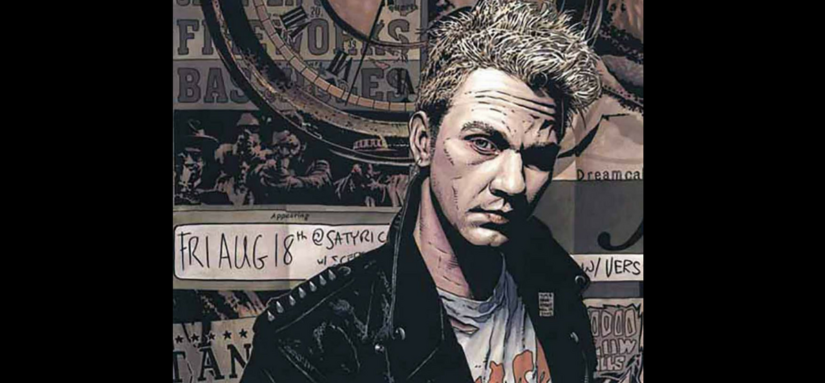
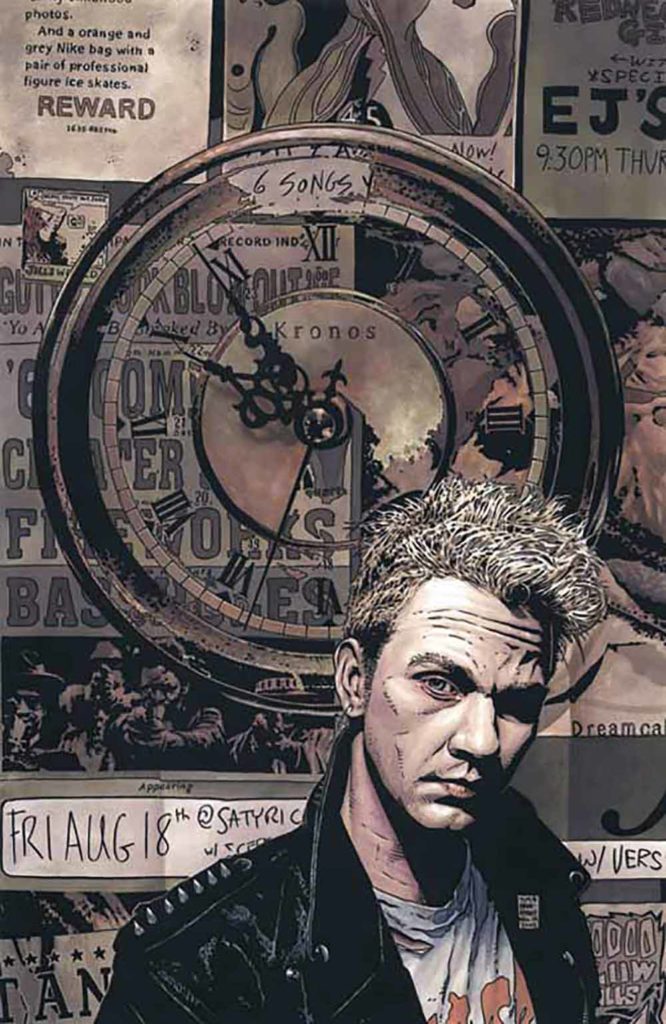
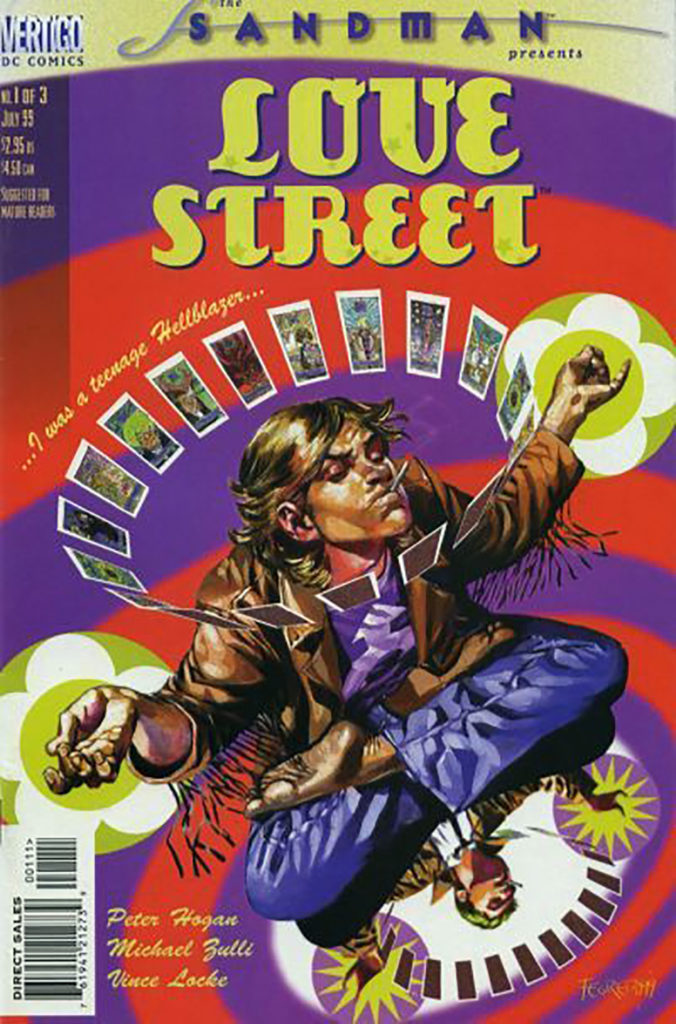
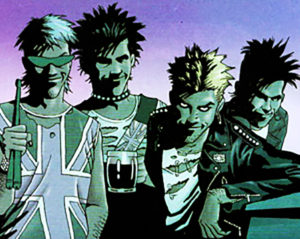
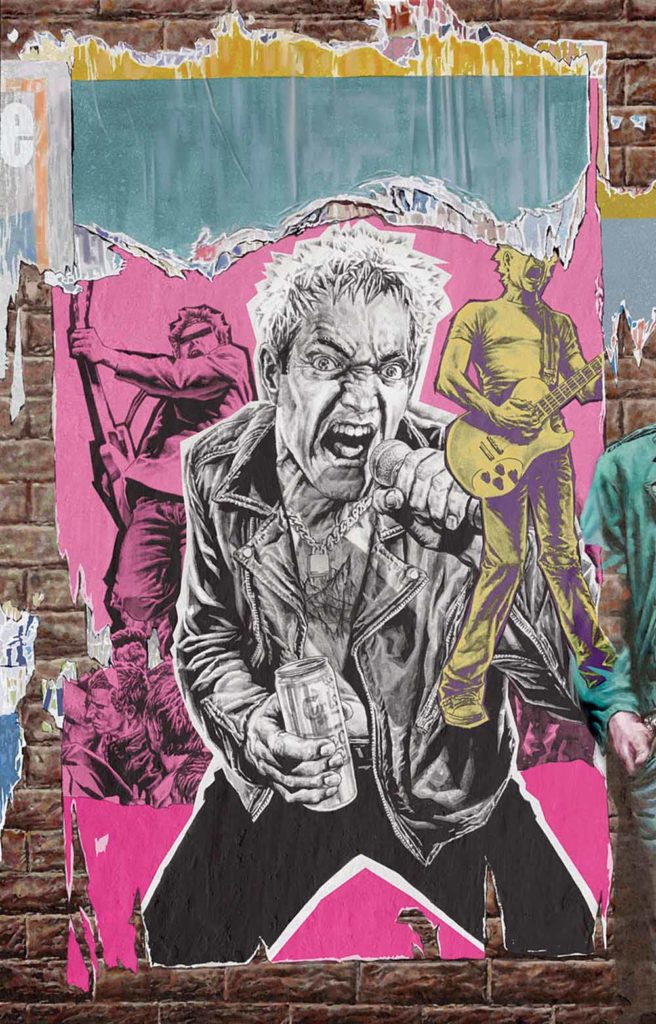
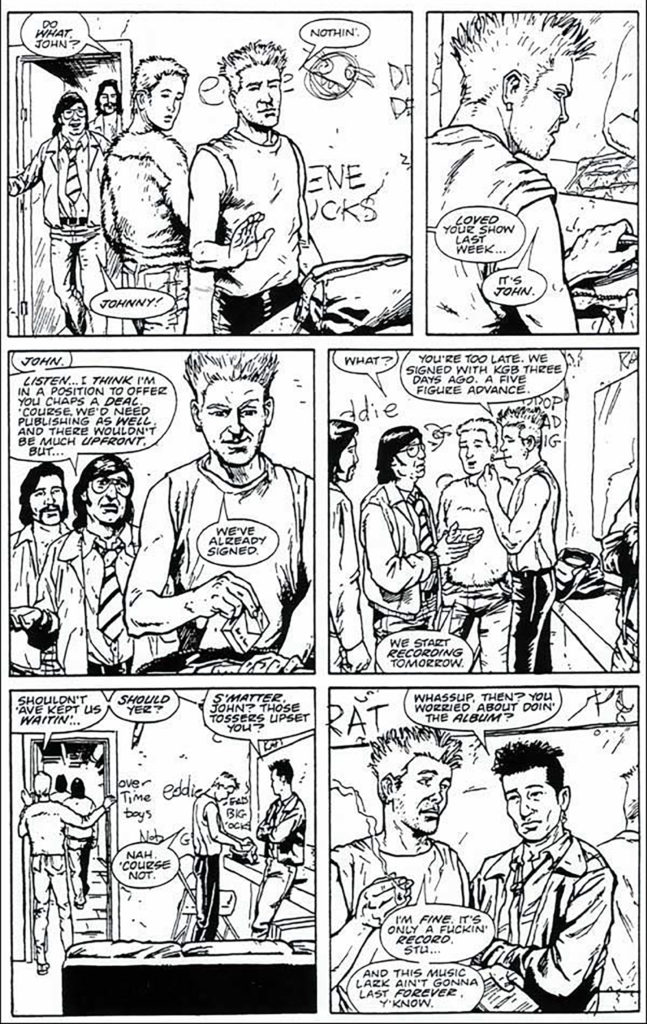
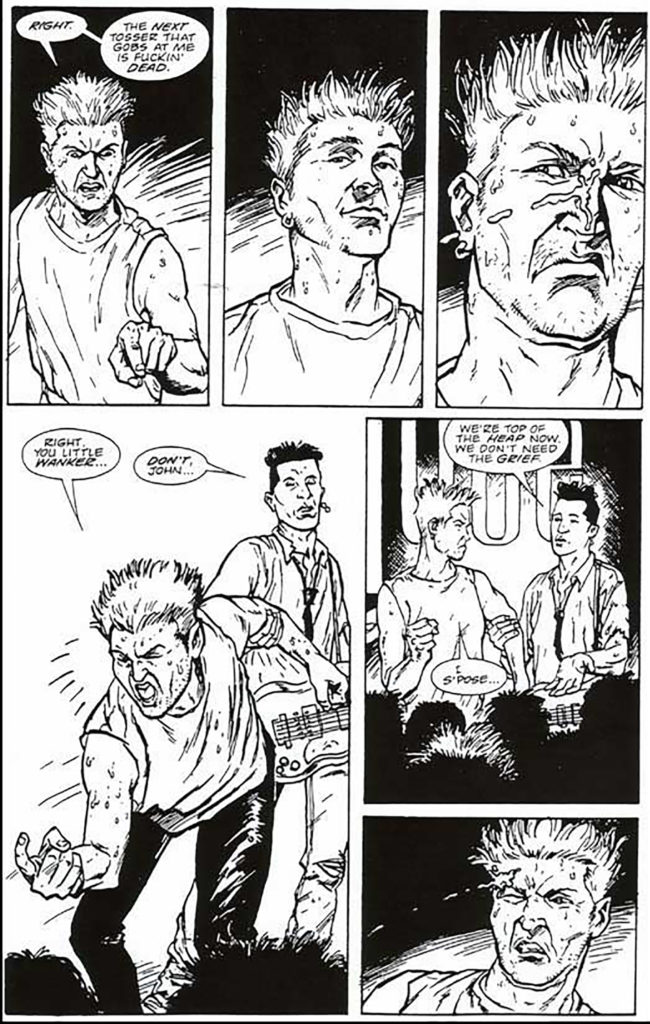
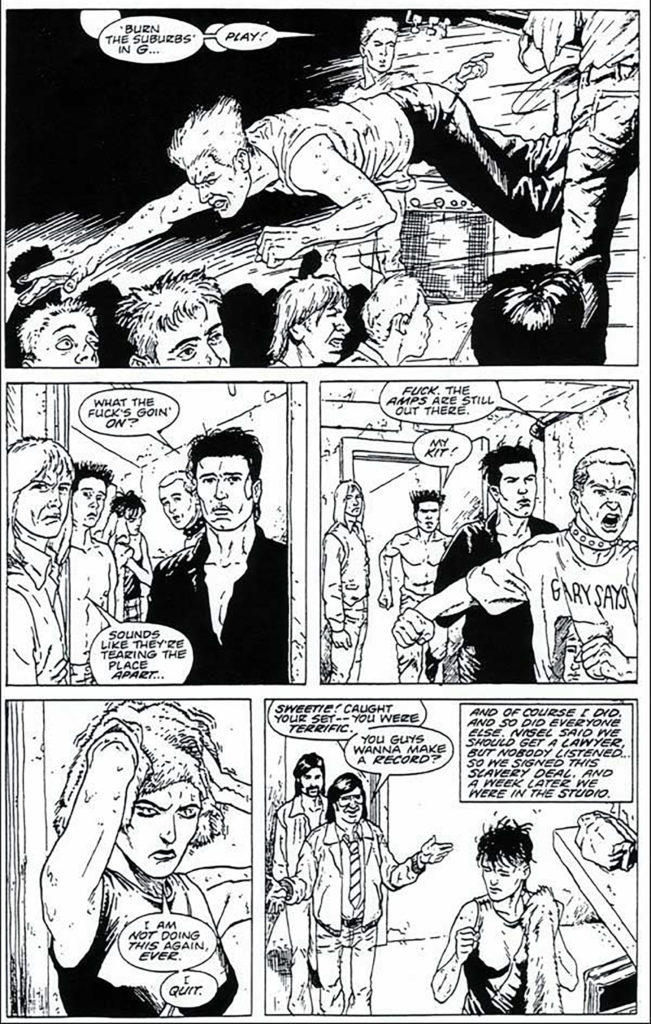
Comments are closed.